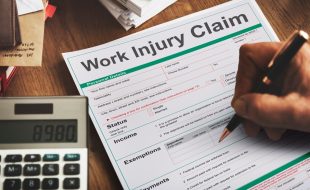Table Of Contents
How Common Are Elevator Accidents In The Workplace?
Last Updated on: September 25th, 2025
Elevator accidents in the workplace are a topic that garners attention due to the potential risks and consequences involved. While elevators have significantly improved safety and convenience in modern buildings, accidents still occur.
Statistically, elevators are considered one of the safest modes of transportation in a building. Compared to other daily activities such as driving or walking, elevator accidents are relatively rare. However, when these accidents happen, the impact can be severe and lead to injuries, financial losses, or in some cases, fatalities.
In order to better understand the risks and challenges associated with elevator accidents, it is crucial to explore the different types of incidents that may occur. This information can help companies, property owners, and safety professionals take proactive measures to prevent such accidents and create a safer work environment for all.
Incidence of Elevator Accidents in the Workplace
Statistical Overview
Elevator accidents in the workplace are relatively rare occurrences. According to the U.S. Bureau of Labor Statistics, approximately 30 individuals suffer fatal injuries and 17,100 sustain non-fatal injuries related to elevators annually in the United States. This translates to a rate of 0.2 fatalities and 120.3 non-fatal injuries per 100,000 full-time workers.
In comparison, the overall incidence rate of non-fatal workplace injuries and illnesses in the United States is 2,526 cases per 100,000 full-time workers.
Comparison with Other Workplace Accidents
While elevators do present some risk of accidents, an elevator accident lawyer will tell you that they statistically pose less of a threat than other types of workplace hazards. To put things in perspective, the following table lists other common workplace accidents, their annual number of cases, and rates per 100,000 workers for comparison with elevator accidents.
Table 2: Comparison of Workplace Accident Statistics (Annually, United States)
| Type of Accident | Number of Cases | Rate per 100,000 Workers |
| Falls, slips, and trips | 240,160 | 1,141.6 |
| Contact with objects and equipment | 251,390 | 1,194.6 |
| Transportation-related accidents | 40,610 | 192.8 |
Elevator accidents have significantly lower incidence rates compared to other common types of workplace accidents. For example, falls, slips, and trips occur at a rate nearly 10 times higher than elevator accidents (1,141.6 vs. 120.3 per 100,000 workers). Similarly, contact with objects and equipment accidents occur at a rate almost 10 times higher than elevator accidents (1,194.6 vs. 120.3 per 100,000 workers).
In conclusion, while elevator accidents can and do occur in the workplace, they are relatively rare events compared to many other types of workplace hazards. Employers and employees should still remain vigilant in ensuring elevator safety, but it’s essential to be aware of and address the more prevalent workplace risks as well.
Factors Contributing to Elevator Accidents
Elevator accidents in the workplace can be attributed to various causes. This section discusses the three primary factors that contribute to these accidents: equipment malfunction, human error, and lack of maintenance.

Equipment Malfunction
One significant factor leading to elevator accidents is equipment malfunction. Malfunctions can arise from several issues, such as:
- Defective components: Poor manufacturing quality or design flaws can cause critical elevator elements to fail over time.
- Wear and tear: Normal usage of elevators leads to the gradual degradation of parts, which can result in malfunctions if not addressed.
- Power outages: Elevators heavily rely on electricity; thus, power outages can cause lifts to malfunction and potentially lead to accidents.
Proper maintenance and timely replacement of faulty parts can help reduce the risk of equipment malfunction.
Human Error
Another major factor contributing to elevator accidents is human error. Instances of human error can include:
- Overloading: Exceeding the elevator’s weight capacity can cause the elevator to malfunction or even collapse.
- Obstructing doors: Placing objects in between the elevator doors or attempting to pry open the doors can result in mishaps.
- Incorrect operation: Failing to follow the manufacturer’s guidelines on operating the elevator can lead to accidents.
Educating employees on proper elevator usage and adhering to safety guidelines can help minimize human error-related accidents.
Lack of Maintenance
The final factor to consider is the lack of maintenance. Routine inspection and maintenance are essential in preventing elevator accidents and injuries. If you feel your injury was the result of your work’s elevator not being properly maintained, be sure to tell your lawyer this.
Read Also:















